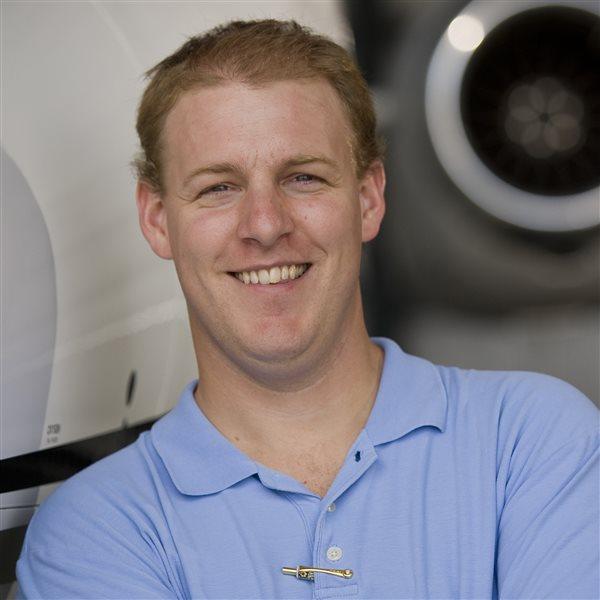Pilot Products
'Train Like You Fly: A Flight Instructor's Guide to Scenario-Based Training'
A new book written by Arlynn McMahon and published by Aviation Supplies and Academics is intended to expand industry efforts to train pilots based on scenarios instead of tasks. Train Like You Fly: A Flight Instructor's Guide to Scenario- Based Training is an informative introduction to the concept of scenario-based training, and should nudge any reader out of any comfort zone centered around teaching tasks, encouraging them to think more about this approach to flight training.
McMahon does a wonderful job of presenting a full overview of scenario-based training (SBT) with a surprisingly neutral, objective voice. The book covers a broad range of topics in its 200-plus pages. These include an introduction and definition of scenario-based training, how to redesign a syllabus to include this method of instructing, how debriefing and evaluation differ with SBT, using weather in SBT, and a step-by-step guide to how SBT can be incorporated into training.
Adding to the book's general tone are chapters on instrument training, advanced training, and CFI training using scenarios. As a bonus, McMahon takes space to discuss highly relevant topics to flight schools today, namely how to better present the business and increase instructor performance.
Throughout the book are useful tools, such as risk assessment checklists, debriefing forms, and syllabus suggestions. McMahon also recognizes the abundance of advanced technology in today's training fleet and suggests ideas on how to incorporate those tools into training. Autopilots, for example, are presented as an aid, and not just a piece of dead weight through private training.
Finally, McMahon presents her personal case study on scenario-based training. A caution-after reading it you may never train by task again.
Price: $19.95
Contact: www.asa2fly.com; 800-426-8338
Blockalls
Looking for a new view-limiting device for instrument training? If so, check out Blockalls. The new glasses are light, comfortable, stylish, and durable. Various testers found Blockalls to be superior to some existing products on the market because of the view limiting device's fit and finish. Blockalls are essentially a pair of stylish safety glasses (and no, that's not an oxymoron) with a colored coating over most of the viewable area. Eight different colors are available, including green, red, black, and pink. Blockalls feature soft rubber nose pads and a stem with a soft, flexible rubber end. That makes putting the glasses on and taking them off easy, and wearing them is comfortable-even with a headset. Each pair comes with a plastic case to protect them in a flight bag.
Price: $23.95
Contact: www.blockalls.com; 239-222-3588
New products from Sporty's Pilot Shop
Sporty's Pilot Shop has introduced a new four-color AOPA flashlight for pilots. The flashlight features the AOPA wings logo and four independent switches to control the white, blue, red, and green light beams. A high-intensity white light is also available to use for the aircraft preflight inspection. The flashlight measures three and three-quarters inches long and uses three AAA batteries.
Price: $59.95
Most pilots would agree that a kneeboard is an essential tool for the cockpit, since you'll use it to keep a chart, flight log, E6B, writing tool, taxiway diagram, and other necessities within easy reach. Sporty's new Flight Gear VFR Tri-Fold Kneeboard includes two zippered storage compartments, two mesh pockets, a clear chart pocket, and two pen loops. The kneeboard also features a clipboard displaying a VFR placard of the cruising altitudes, flight plan sequence, and more. The kneeboard measures 20 inches by 11 and one-half inches open, or seven and one-quarter inches by 11 and one-half inches closed.
Price: $24.95
Contact: www.sportys.com; 800-776-7897
Sunglass roundup
Summer brought a smattering of sunglasses to the office for review, each pair with various points of strength and weakness. The low sun angle and potential for glare off snow make late fall and winter a good time to think about shades again.
The new signature line of VedaloHD sunglasses introduced in July was made with pilots in mind, and each pair offers many features that aviators will enjoy. The sunglasses are incredibly light, weighing in at less than a half-ounce, according to the company. Each pair is offered in either a smoke or what VedaloHD calls the Copper-Rose lens. Previous models of VedaloHD sunglasses had hingeless stems, which made them prone to damage. The new line, however, seems very strong. The stems are very thin and flexible, making them perfect for headset use.
Serengeti offers a line of sunglasses that many pilots are familiar with, and for good reason. If you summed up the entire cache of Serengeti sunglasses in one word it would be lenses. The folks at Serengeti have developed a great copper lens that enhances vision. It creates more contrast among various colors and shades to bring out features in all kinds of visibility and light. The frames are comfortable and should meet your expectations for a standard pair of aviator glasses.
Finally, we tried a pair of Scheyden's El Capitan from the company's classic line of flip-ups. The Scheydens were the heaviest sunglasses of the three, but they also seemed to be the most resistant to damage. Wearing them under a headset for a long time proved to be comfortable, and the lenses were a nice gray and well suited to aviation. But what Scheyden offers that many others cannot is a good-looking pair of sunglasses that flip up, hence the additional weight. What at first seemed like a feature better suited to welding glasses than sunglasses turned out to be very handy. Walk into the hangar and can't see? Just flip. Fly into a dark cloud? Flip. We never had to take them off.
Contact: www.vedalohd.com; www.serengeti-eyewear.com; www.scheyden.com



